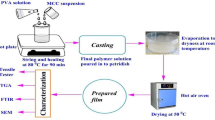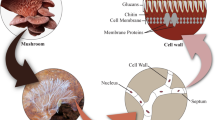Abstract
The novelty of this study is to explore the effect of heat treatment of CS on the properties of biocomposites. 200°C, 300°C, 500°C, and burning of 500°C were selected to heat treat CS to obtain CS fillers, and the biocomposites were prepared using CS fillers and LLDPE. The heat treatment of CS can improve the interface bonding and compatibility of biocomposites by the results of FTIR, SEM, and CA. The crystal planes were not changed by the addition of CS fillers. The results of DSC and TGA showed that the heat treatment of CS promoted crystallization and improved the heat resistance of LLDPE. In addition, the flexural properties, tensile properties, stiffness, elasticity, creep resistance, and stress relaxation resistance were all increased by the heat treatment of CS, although it exhibited an adverse effect on the impact strength of LLDPE. After comparison, the best flexural strength and modulus (13.00 MPa and 0.75 GPa) were obtained in 200CSB-L due to the enhancement of CS rigidity by 200°C heat treatment. Also, 200CSB-L showed the best stiffness, elasticity, and dimensional stability than others. The best tensile strength and modulus (10.89 MPa and 0.26 GPa) were obtained in 500CSB-L due to its mechanical interlocking structure. The results of this study indicate that heat treatment would play an important role in biocomposites in terms of the benefit in mechanical properties.










Similar content being viewed by others
Change history
28 February 2022
A Correction to this paper has been published: https://doi.org/10.1007/s10965-022-02955-1
References
Mittermeier C, Lion A (2020) Challenges in the experimental investigation of the caloric and thermomechanical behaviour of semi-crystalline polymers: a study on the example of polyethylene terephthalate (PET). Polym Test 81:106252
Patel K, Chikkali SH, Sivaram S (2020) Ultrahigh molecular weight polyethylene: Catalysis, structure, properties, processing and applications. Prog Polym Sci 101290
Li S, Li X, Chen C, Wang H, Deng Q, Gong M et al (2016) Development of electrically conductive nano bamboo charcoal/ultra-high molecular weight polyethylene composites with a segregated network. Compos Sci Technol 132:31–37
Mazur K, Jakubowska P, Romańska P, Kuciel S (2020) Green high density polyethylene (HDPE) reinforced with basalt fiber and agricultural fillers for technical applications. Compos B Eng 202:108399
Penumakala PK, Santo J, Thomas A (2020) A critical review on the fused deposition modeling of thermoplastic polymer composites. Compos B Eng 108336
Na Y, Dai S, Chen C (2018) Direct synthesis of polar-functionalized linear low-density polyethylene (LLDPE) and low-density polyethylene (LDPE). Macromolecules 51:4040–4048
Zhang Q, Khan MU, Lin X, Cai H, Lei H (2019) Temperature varied biochar as a reinforcing filler for high-density polyethylene composites. Compos B Eng 175:107151
AL-Oqla FM (2017) Investigating the mechanical performance deterioration of Mediterranean cellulosic cypress and pine/polyethylene composites. Cellulose 24:2523–2530
Zhang Q, Lei H, Cai H, Han X, Lin X, Qian M et al (2020) Improvement on the properties of microcrystalline cellulose/polylactic acid composites by using activated biochar. J Clean Prod 252:119898
Pan C, Kou K, Jia Q, Zhang Y, Wu G, Ji T (2017) Improved thermal conductivity and dielectric properties of hBN/PTFE composites via surface treatment by silane coupling agent. Compos B Eng 111:83–90
Yao H, Zhou G, Wang W, Peng M (2018) Effect of polymer-grafted carbon nanofibers and nanotubes on the interlaminar shear strength and flexural strength of carbon fiber/epoxy multiscale composites. Compos Struct 195:288–296
Zhang Q, Cai H, Yi W, Lei H, Liu H, Wang W et al (2020) Biocomposites from organic solid wastes derived biochars: a review. Materials 13:3923
Li J, Zhang X, Geng L (2019) Effect of heat treatment on interfacial bonding and strengthening efficiency of graphene in GNP/Al composites. Compos A Appl Sci Manuf 121:487–498
Chandrasekar M, Ishak M, Sapuan S, Leman Z, Jawaid M (2017) A review on the characterisation of natural fibres and their composites after alkali treatment and water absorption. Plast, Rubber Compos 46:119–136
Akinyemi AB, Omoniyi ET, Onuzulike G (2020) Effect of microwave assisted alkali pretreatment and other pretreatment methods on some properties of bamboo fibre reinforced cement composites. Constr Build Mater 245:118405
Zhang Q, Zhang D, Xu H, Lu W, Ren X, Cai H et al (2020) Biochar filled high-density polyethylene composites with excellent properties: Towards maximizing the utilization of agricultural wastes. Ind Crops Prod 146:112185
Das O, Kim NK, Kalamkarov AL, Sarmah AK, Bhattacharyya D (2017) Biochar to the rescue: Balancing the fire performance and mechanical properties of polypropylene composites. Polym Degrad Stab 144:485–496
Li S, Huang A, Chen Y-J, Li D, Turng L-S (2018) Highly filled biochar/ultra-high molecular weight polyethylene/linear low density polyethylene composites for high-performance electromagnetic interference shielding. Compos B Eng 153:277–284
Zhang Q, Khan MU, Lin X, Yi W, Lei H (2020) Green-composites produced from waste residue in pulp and paper industry: A sustainable way to manage industrial wastes. J Clean Prod 262:121251
Zhang X, Li Y, Wang M, Han L, Liu X (2019) Effects of Hydrothermal Carbonization Conditions on the Combustion and Kinetics of Wheat Straw Hydrochar Pellets and Efficiency Improvement Analyses. Energy Fuels 34:587–598
Wei Y, Shen C, Xie J, Bu Q (2020) Study on reaction mechanism of superior bamboo biochar catalyst production by molten alkali carbonates pyrolysis and its application for cellulose hydrolysis. Sci Total Environ 712:136435
Sugumaran V, Kapur GS, Narula AK (2018) Sustainable potato peel powder–LLDPE biocomposite preparation and effect of maleic anhydride-grafted polyolefins on their properties. Polym Bull 75:5513–5533
Zhang Q, Zhang D, Lu W, Khan MU, Xu H, Yi W et al (2020) Production of high-density polyethylene biocomposites from rice husk biochar: Effects of varying pyrolysis temperature. Sci Total Environ 738:139910
Das O, Bhattacharyya D, Hui D, Lau K-T (2016) Mechanical and flammability characterisations of biochar/polypropylene biocomposites. Compos B Eng 106:120–128
Ayrilmis N, Kaymakci A, Güleç T (2015) Potential use of decayed wood in production of wood plastic composite. Ind Crops Prod 74:279–284
Codou A, Misra M, Mohanty AK (2018) Sustainable biocarbon reinforced nylon 6/polypropylene compatibilized blends: Effect of particle size and morphology on performance of the biocomposites. Compos A Appl Sci Manuf 112:1–10
Silveira EA, Lin B-J, Colin B, Chaouch M, Pétrissans A, Rousset P et al (2018) Heat treatment kinetics using three-stage approach for sustainable wood material production. Ind Crops Prod 124:563–571
Srinivasan P, Sarmah AK, Smernik R, Das O, Farid M, Gao W (2015) A feasibility study of agricultural and sewage biomass as biochar, bioenergy and biocomposite feedstock: production, characterization and potential applications. Sci Total Environ 512:495–505
Zhang Q, Xu H, Lu W, Zhang D, Ren X, Yu W et al (2020) Properties evaluation of biochar/high-density polyethylene composites: Emphasizing the porous structure of biochar by activation. Sci Total Environ 737:139770
Shah KJ, Shukla AD, Shah DO, Imae T (2016) Effect of organic modifiers on dispersion of organoclay in polymer nanocomposites to improve mechanical properties. Polymer 97:525–532
Wang Y, Zhu W, Wan B, Meng Z, Han B (2021) Hygrothermal ageing behavior and mechanism of carbon nanofibers modified flax fiber-reinforced epoxy laminates. Compos A Appl Sci Manuf 140:106142
Vieira PSC, de Souza FS, Cardoso DCT, Vieira JD, de Andrade Silva F (2020) Influence of moderate/high temperatures on the residual flexural behavior of pultruded GFRP. Compos B Eng 200:108335
Zhang Q, Cai H, Ren X, Kong L, Liu J, Jiang X (2017) The dynamic mechanical analysis of highly filled rice husk biochar/high-density polyethylene composites. Polymers 9:628
Ghosh SK, Prusty RK, Rathore DK, Ray BC (2017) Creep behaviour of graphite oxide nanoplates embedded glass fiber/epoxy composites: Emphasizing the role of temperature and stress. Compos A Appl Sci Manuf 102:166–177
Garner A, Genedy M, Kandil U, Taha MR (2018) Controlling off-axis stiffness and stress-relaxation of carbon fiber-reinforced polymer using alumina nanoparticles. J Compos Mater 52:2483–2491
Acknowledgements
This work was financially supported by Project funded by the Natural Science Foundation of Zhejiang Province (LY22C160003), China Postdoctoral Science Foundation (2021M692807), the Natural Science Foundation of Liaoning Province of China (2021-MS-228), and, Liaoning Provincial Department of Education Project (LJKZ0692).
Author information
Authors and Affiliations
Corresponding authors
Additional information
Publisher's Note
Springer Nature remains neutral with regard to jurisdictional claims in published maps and institutional affiliations.
Rights and permissions
About this article
Cite this article
Gu, S., Chang, L., Zhang, Q. et al. Sustainable biocomposites produced from cotton stalk wastes: Effect of heat treatment. J Polym Res 29, 42 (2022). https://doi.org/10.1007/s10965-021-02878-3
Received:
Accepted:
Published:
DOI: https://doi.org/10.1007/s10965-021-02878-3




